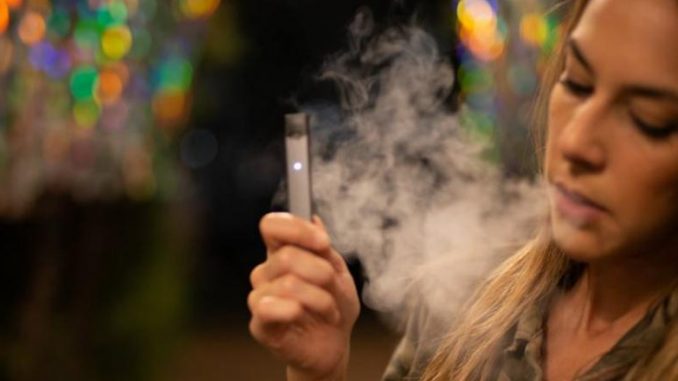
GENEVA, Switzerland, April 20, 2021 (ENS) – Tobacco kills up to half of its users, and the human and economic costs of tobacco are on the rise, the World Health Organization, WHO, is warning. Tobacco kills more than eight million people each year. More than seven million of those deaths are the result of direct tobacco use while around 1.2 million are the result of non-smokers exposed to second-hand smoke.
Although more than 80 percent of the world’s 1.3 billion tobacco users live in low-income and middle-income countries, the UN health agency says improved tobacco taxation policies can be a key component of building back better after COVID-19, where countries need additional resources to respond and to finance health system recovery.
WHO’s new tobacco tax manual shows ways to save lives, money and build back better after COVID-19, the agency says. It shows countries ways to cut down on over US$1.4 trillion in health expenditures and lost productivity annually due to tobacco use worldwide.
“We launched this new manual to provide updated, clear, and practical guidance for policymakers, finance officials, tax authorities, customs officials and others involved in tobacco tax policy to create and implement the strongest tobacco taxation policies for their specific countries,” said Jeremias N. Paul Jr, leader of the Fiscal Policies for Health team in the Health Promotion Department at WHO.
“We hope this document sheds light on the significant advantages to raising tobacco taxation,” Paul said. “The data and insights provided here should be an eye opener for policymakers worldwide.”
The “best buy” highlighted in the manual not only saves money, but saves lives.

Only 14 percent of the world has enough tax on tobacco, WHO believes. In 2018 only 38 countries, covering 14 percent of the global population had sufficiently high tobacco taxes. WHO says “sufficiently high” means means taxing at least 75 percent of the price of these health-harming products.
By implementing proven policies like tobacco taxes, the costs created by the tobacco industry to local communities and nations can be avoidable. It is a win for population health, revenue and for development and equity.
WHO says raising tobacco taxes is SMART. Tobacco taxes Save lives, Mobilize resources, Address health inequities, Reduce health system burdens and costs, and Target noncommunicable risk factors for the achievement of Sustainable Development Goals.
All forms of tobacco are harmful, and there is no safe level of exposure to tobacco, WHO warns. Cigarette smoking is the most common form of tobacco use worldwide. Other tobacco products include waterpipe tobacco, smokeless tobacco products, cigars, cigarillos, roll-your-own tobacco, pipe tobacco, bidis and kreteks.
Waterpipe tobacco use is damaging to health in similar ways to cigarette tobacco use. However, the health dangers of waterpipe tobacco use are often little understood by users.
Smokeless tobacco use is highly addictive and damaging to health. Smokeless tobacco contains many cancer-causing toxins and its use increases the risk of cancers of the head, neck, throat, oesophagus and oral cavity, including cancer of the mouth, tongue, lip and gums, according to the World Health Organization.
Almost half of children regularly breathe air polluted by tobacco smoke in public places, and 65,000 children die each year from illnesses attributable to second-hand smoke. In infants, it raises the risk of sudden infant death syndrome. In pregnant women, it causes pregnancy complications and low birth weight.
Smoke-free laws protect the health of non-smokers and are popular, as they do not harm business and they encourage smokers to quit. Pictorial health warnings work too, the agency has found. WHO says that large pictorial or graphic health warnings, including plain packaging, with hard hitting messages can persuade smokers to protect the health of non-smokers by not smoking inside the home, increase compliance with smoke-free laws and encourage more people to quit tobacco.
Featured image: Young girl holding her juul and vaping tobacco. September 13, 2018 (Photo by Sarah Johnson)
© 2021, Environment News Service. All rights reserved. Content may be quoted only with proper attribution and a direct link to the original article. Full reproduction is prohibited.
